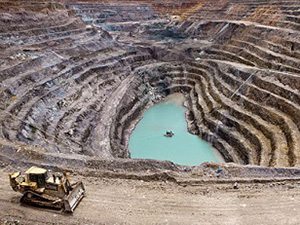
[miningmx.com] – A RECENT conference convened by Goldman Sachs, the US bank, polled delegates on which metals they expected to recover the best in 2016. About 27% of delegates expected gold to be the best performing commodity next year with copper coming a close second at 20% of delegates.
Embarrassingly, this is the contrary view to Goldman Sachs which believes copper has the best prospects. The truth of the matter is – and whisper this – nobody actually knows for sure.
Fending off questions as to why Anglo American hadn’t acted quicker to cut loss-making operations and restructure central costs, CEO Mark Cutifani, responded somewhat wryly: “I don’t recall anyone two years ago predicting the prices we have today. I find that quite interesting”.
He’s right. Nobody was. The metals price declines, especially in the second half of 2015, have been a curve ball of note.
On the supply side, the commodities market is heavily influenced by China’s economy which is undergoing fundamental change as it transitions from an investment-led economy to a consumer one, according to economists.
“Our economists believe that growth will continue to slow down next year,” said Goldman Sachs in a December 3 report. “Structural issues such as over-capacity and the debt overhang will weigh on [China’s] domestic demand,” it said.
In the absence of demand side improvements, therefore, the sobering news is that for commodity prices to show signs of improvement there may have to be a change on the supply side: namely, bankruptcies.
For an example of how this might work, one has to look at how the opposite has already been true.
Keeping Lonmin afloat through a highly dilutive shares for cash issue – when there was hope it might be restructured leading to massive cuts in platinum output – was a contributing factor that saw the price of platinum fall from $1,000/oz to about $850/oz.
There are some bright spots. The malaise in rough diamond prices is expected to ease in the course of 2016 as a temporary oversupply of stock among polishers and cutters is eased, and because retail demand in China and the US is thought to be stable.
Aluminium, manganese and coal, especially coal, are under tremendous pressure. There’s also a secular change in sentiment against coal as a source of energy with many banks and funds cutting back new investment in the fuel.
Said Barclays Capital in a recent report: “Our commodity supply/demand models show no clear signs of deficits emerging until 2018 (iron ore) or later (copper, coal and aluminium)”.










